Driver’s view: Alan Ramsay’s short-chop Krone RX 370
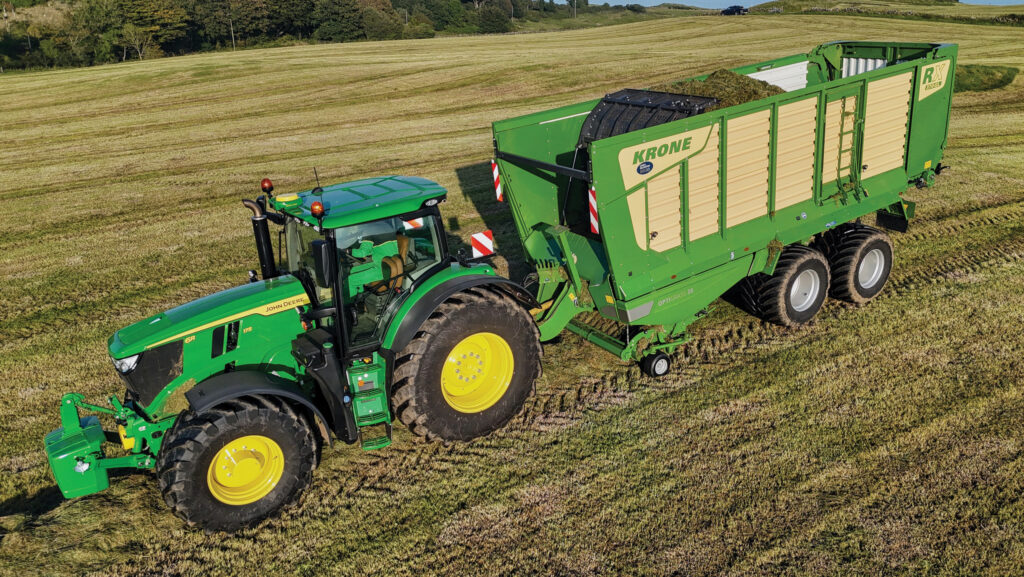 © James Andrews
© James Andrews The RX is top dog in Krone’s mid-sized forage wagon line-up, with a trio of models offering capacities from 33cu m to 40cu m.
Standout features include a pivoting headboard, variable-speed hydraulic pick-up and the option of 40 or 54 knives that give respective chop lengths of 37mm and 28mm.
To smooth out crop flow, pick-up and cutting rotor speeds are co-ordinated, and there are wide steel plates to make sure grass cannot escape the blades.
Also in the offing is hydraulic suspension – standard on the largest model, optional on the two smaller ones – and an in-house, isobus-controlled additive system.
See also: Tips and advice for buying a used forage wagon
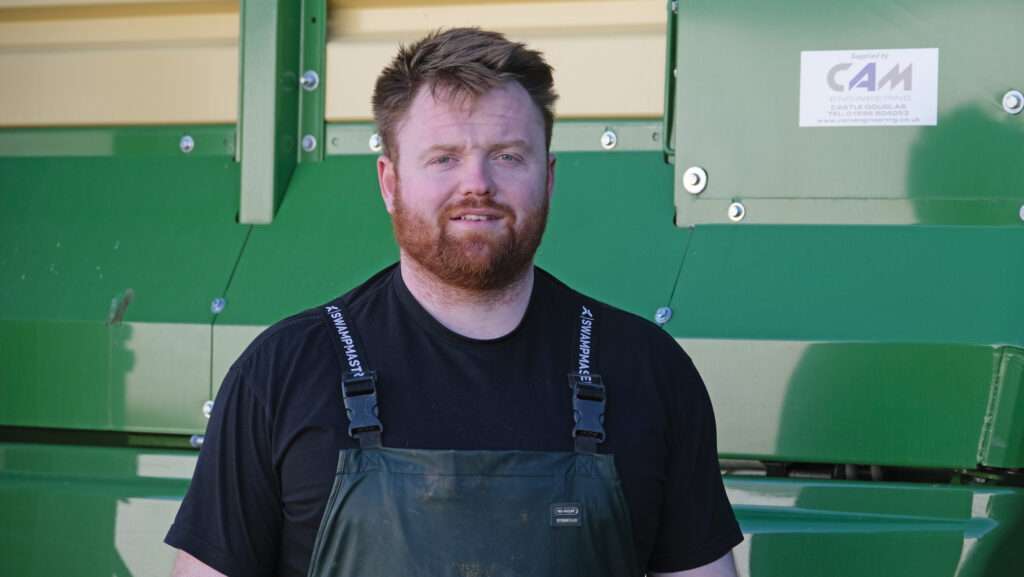
Alan Ramsay © James Andrews
Occupying the middle spot in the range is the 37cu m RX 370, two of which are run by Wigtownshire organic dairy producer and contractor Alan Ramsay.
Together with his father, also Alan, he milks 300 cows, manages 320ha of his own grassland plus 40ha of wholecrop, and produces both clamp and baled silage for other farms.
RX 370 GL Optigrass 28
- Year 2023
- Capacity 37cu m
- Pick-up width 2.1m
- Knives 54
- Chop length 28mm
- Weight 10.9t
- Tyres 800/45 R26.5 Vredestein
- Retail price £188,185
Why a forage wagon?
For years we did two silage cuts a season and got a local contractor to do the chopping with its self-propelled forager.
But one particularly dry year yields were so poor that we didn’t have enough grass to warrant the cost.
Instead, we got a neighbour to pick it up with a Krone MX 370 forage wagon, and we were won over by the concept.
Not only was it significantly cheaper, but it meant we could do three lighter cuts that gave us a better yield and quality.
Since then, we’ve increased this to four, which is even better – the first is usually in early May and the last in mid-October.
It wasn’t long before we bought our own wagon – a Krone MX 330 – which we ran for five seasons before upgrading to an RX.
And why Krone RX 370s?
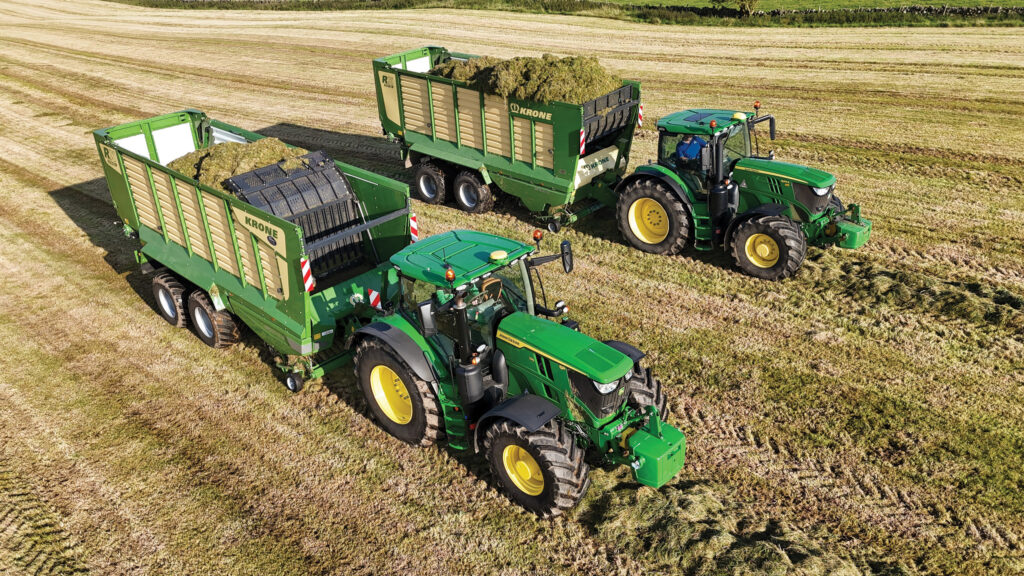
© James Andrews
We’ve always been impressed with the quality of Krone equipment, and we’ve got good dealer support in the area from both from Cam Engineering and Carr’s Billington.
So, although we got some prices for other makes, we were never that serious about going elsewhere.
The RX 370 was a natural progression from the MX 330, which had performed well but was due a refresh.
Plus, the contracting work was growing year-on-year and we could really do with some extra capacity.
We were also sold on some of the RX’s features, particularly the shorter 28mm chop length and hydraulic pick-up.
Before taking the plunge, Cam Engineering sent us a pre-production demonstrator to try in October 2023 – we did our fourth cut with it and liked it so much we kept it.
It worked hard the next spring, alongside a machine run by another contractor who we’d teamed up with.
He then decided he was going to stop running a wagon so, come the autumn, we took the decision to buy a second.
Carr’s Billington already had this one in stock, so we got it for the same price as the first.
Judging by last season, the two will be picking up about 1,600-2,000ha worth of grass this year.
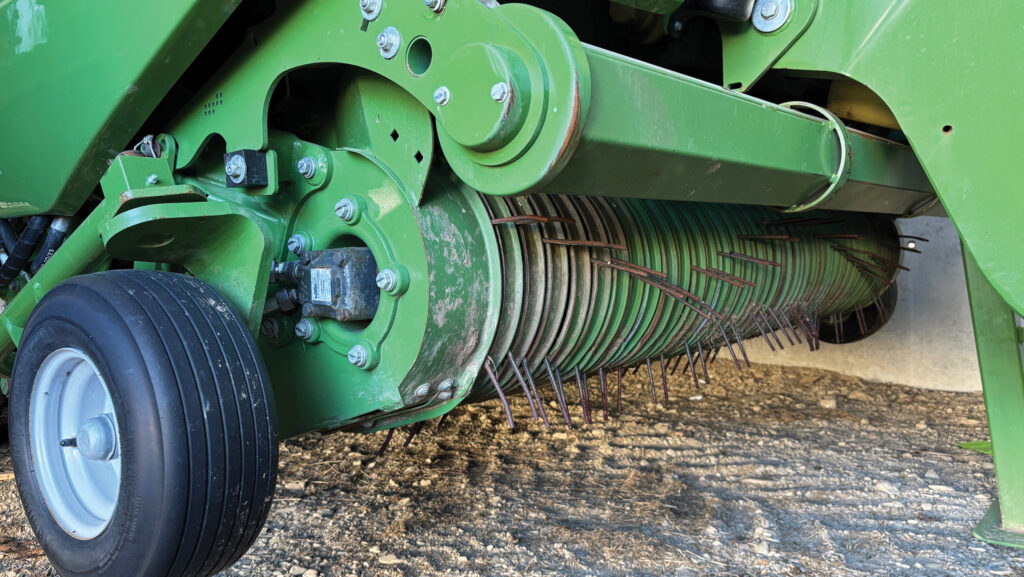
Hydraulic pick-up reel © James Andrews
Any extras?
Both of our machines are fitted with side and rear lights that come on automatically when the tractor is put into reverse.
In our opinion these are essential when working in the dark as you can clearly see where you’re backing.
They’ve also both got reversing cameras which, together with the lights, mean there are virtually no blinds spots, regardless of the time of day.
Our first machine is fitted with Krone’s own additive system, and we’ve got another arriving for the second.
This is the same setup used on the Big X foragers and it’s great as it connects to the tractor via isobus, allowing us to set the rate and view the tank level from the main control screen.
It’s a far cry from aftermarket bolt-on systems, which are generally pretty crude.
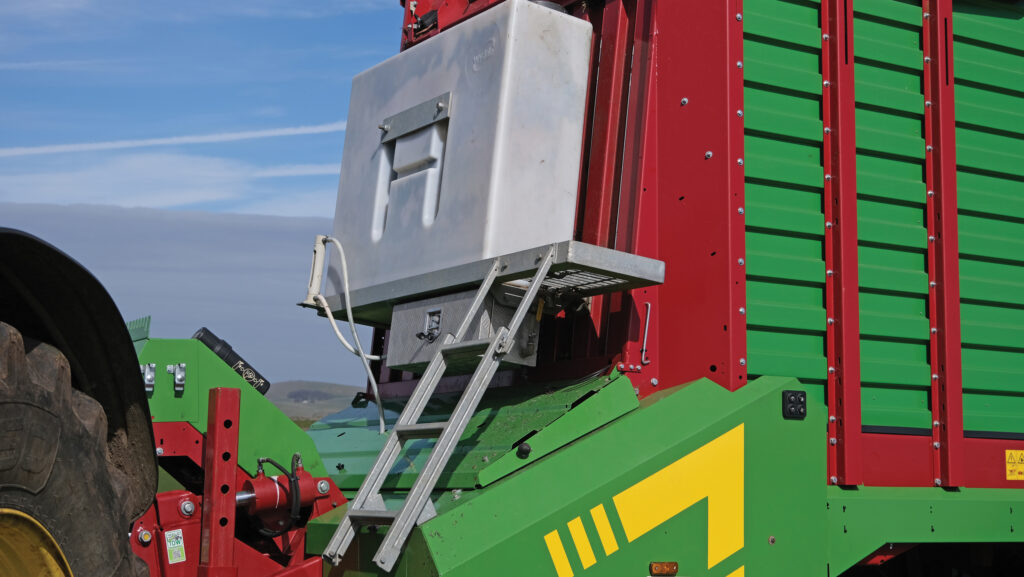
Additive system © James Andrews
How have they performed?
Both machines have gone well and we haven’t had any problems with them other than the odd software glitch that was easily fixed.
Coming from an MX, the improvements are massive. Starting at the front, the wider pick-up with variable hydraulic drive means crop flow is far smoother into the knife bank.
In addition to improving the consistency of chop, it fills more evenly across the width of the machine, rather than being heaped in the middle like on the old model.
The adjustable hydraulic suspension is another improvement, helping to give a smoother ride on the road, and the steering rear axle means it’s surprisingly manoeuvrable for its size.
You just need to watch out for the tail swing, which is considerable.
The pivoting headboard means we’ve got far more capacity, and the autofill system works well enough that we can just leave it to its own devices.
The only time we intervene is to maybe shift the headboard forward a bit to make it easier on the tractors when tackling a steep slope.
One wagon is pulled by a John Deere 6R 215, which copes fairly well, and the other is a 6R 175 that struggles a bit. That said, both are on the limit when the grass is slightly wet.
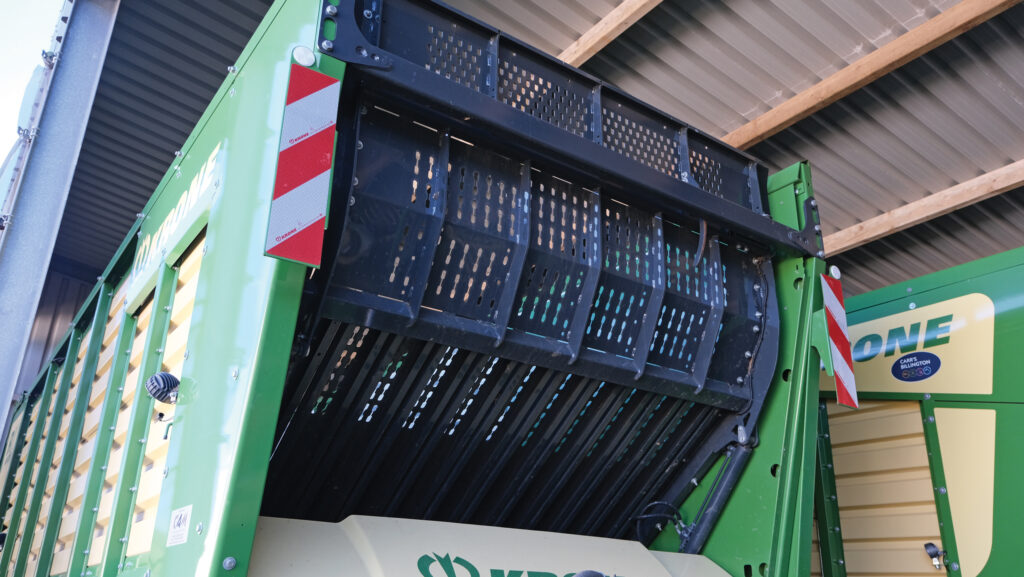
Pivoting headboard © James Andrews
What is grass quality like?
The shorter chop length has made a massive difference to silage quality. I’m on the clamp most of the time so I can see how much finer and more even the crop is.
All this is down to the fact it has 54 knives that cut the grass to 28mm lengths, compared with 44 knives working to 38mm on our old machine.
The improvement in consistency is noticeable too, which is no doubt helped by the more even feeding.
The MX had a habit of pulling some grass through the knives, whereas this knife bank seems to chop everything to the same length.
What could be improved?
The auto knife sharpener. We wouldn’t say this one is worse than any from rival brands – we just think these units have limitations in general.
Firstly, you have to be very careful not to get the knives too hot, which is easily done when there’s a series of flap discs spinning at high speed.
If they do, they become brittle and then they’re much more liable to chipping on our very stony land.
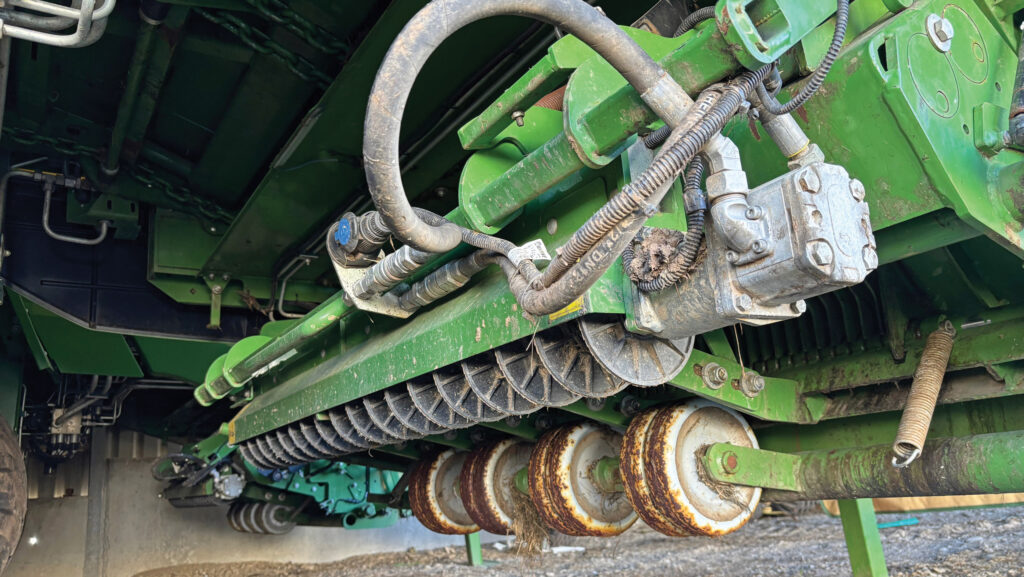
Auto knife sharpener © James Andrews
Instead, we do manual sharpening off the wagon with an Agriknives machine, which has a spinning stone and sprays coolant on the knife during work.
It creates a fantastic edge and means we only need to touch them up every couple of days.
The only problem is that it’s time consuming, particularly with two wagons and a McHale Fusion to service, plus other people’s machines.
To reduce the workload, we’ve just bought a Claas Aqua Non Stop Sharpener. It was a considerable investment, but we can just stack the knives in and let it get on with the job.
Greasing can also be a chore, with 70 nipples to get around every couple of days. The general ones are fine, but there are 54 on the knife bank – one for each roller – which can get tedious.
It would be great if Krone could find some way of grouping these together.
Would you buy another?
At the moment the main focus is paying back the finance on these two.
However, based on the current performance, there’s a good chance we’d go for Krone again next time.
Likes and gripes
Likes
- Fine and consistent chop
- Smooth and even loading
- Neat additive system
- Surprisingly manoeuvrable
Gripes
- Auto knife sharpener
- Loads of grease nipples on knife bank

